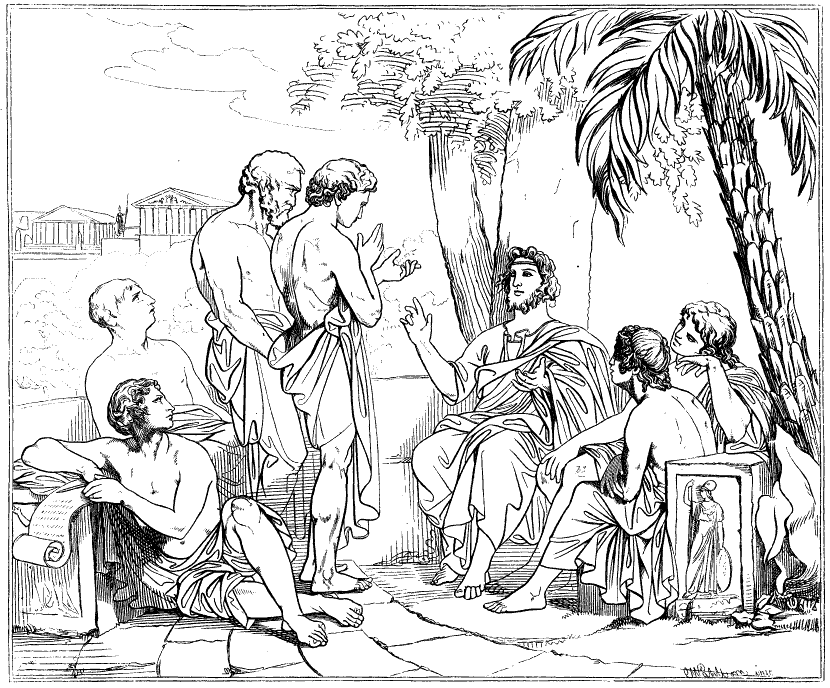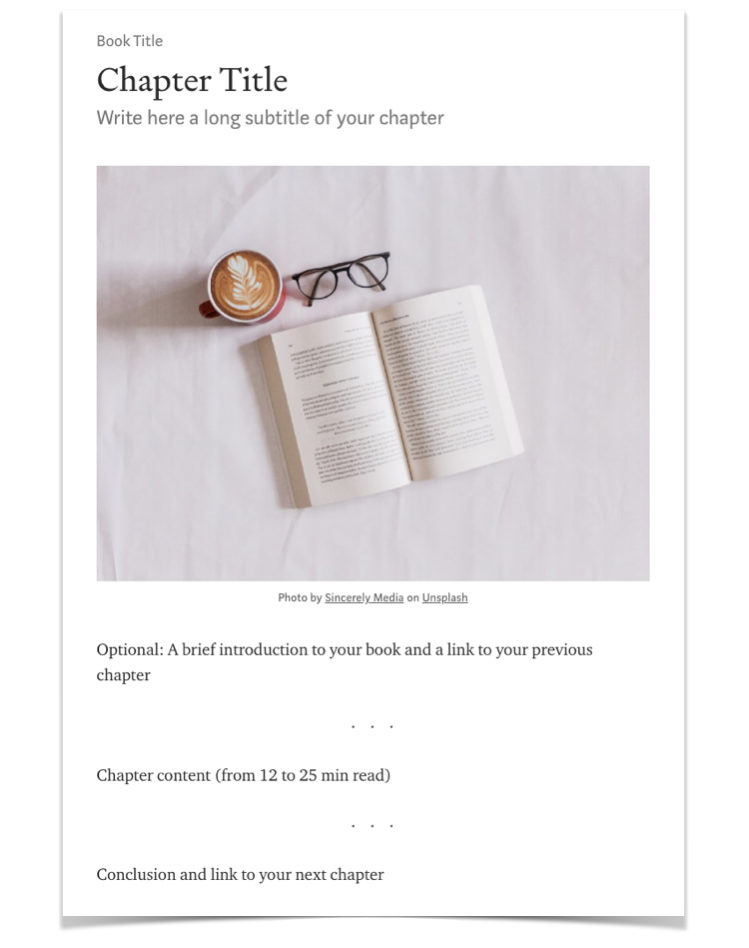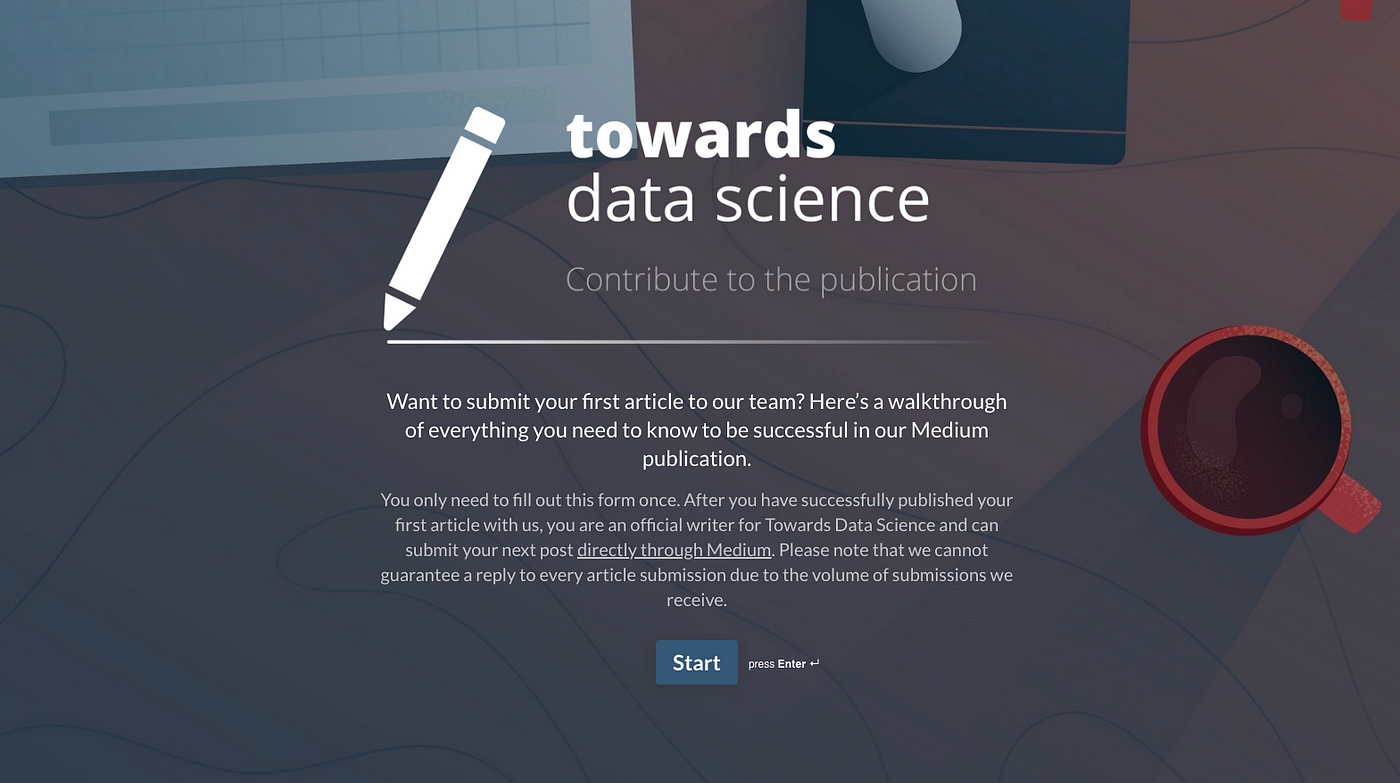LAST UPDATED APRIL 2022
Write for Towards Data Science
Share your concepts, ideas, and codes with a broader audience

Table of contents
Why become a contributor?
Towards Data Science Inc. operates an independent Medium publication. We are looking for writers to propose up-to-date content focused on data science, machine learning, artificial intelligence and programming. If you love to write about these topics, read on!
Publishing in Towards Data Science enables you to reach a broader audience and earn money through theMedium Partner Program. You also remain the only owner of your work, in accordance with the MediumTerms of Servicethat you agree to when establishing a Medium account.
Reach a broader audience with your articles.We are one of the most popular data science blogs in the world and most-read Medium publications with+600K followers.
Here are a few things we do to ensure your articles reach the largest audience possible:
- We have a custom domain (www.qvxyzl.com as opposed to medium.com/towards-data-science) which can help drive more traffic to your article.
- We work closely with Medium to ensure that the stories in TDS meet Medium’s editorial and distribution standards, and stories in TDS often see further distribution because of that.
- We feature our best content on our publication’s pages and social media:Linkedin,Twitter,Facebook,Instagram.
- We sendnewslettersthat feature stories and writers.
- Our best authors can be invited to join us on ourpodcast channel.
Earn money through theMedium Partner Program.Writers can choose to meter stories that are on TDS and earn money through theMedium Partner Programbased on engagement from Medium members. “Metering” refers to making a story eligible to earn money behind Medium’s metered paywall.
Writers keep 100% of the earnings they earn through their Medium account as part of the Medium Partner Program. However, the Medium Partner Program is not administered by TDS and we do not pay contributors directly for articles they voluntarily contribute.
You will remain theonly owner of your workand will be able to delete it at any moment, even after we have published it. The feedback our editors and community provide will appear at the relevant places in your article. You will be able to dismiss or respond to them.
Submission rules
Before submitting your article, there are a few essential things you need to know. Make sure you read each point well, and that you understand them, as by submitting an article to TDS, you are agreeing to comply with all of them.
- Medium’sRulesandTerms of Serviceapply to Towards Data Science (TDS) as it is a Medium publication.Make sure you read it before submitting your article.
- As explained in Medium’sTerms of Service,you own the rights to the content you create and post on Medium and therefore Towards Data Science.You’re also responsible for the content you post. This means you assume all risks related to it, including someone else’s reliance on its accuracy, or claims relating to intellectual property or other legal rights.
- We have adoptedMedium’s Curation Guidelinesfor every article we publish.This means that if your post isn’t of a high enough quality to be curated or doesn’t follow the guidelines, we won’t publish it on Towards Data Science.
- Please don’t submit more than three stories in a single day.Any more than three submissions will be refused without reading. You’re welcome to resubmit them in the future.
- You can make minor edits to a published articleas long as they respect our rules and guidelines. Also, you can remove your article from our publication at any time.
- We might directly edit your content to correct basic spelling mistakes and update minimal formatting. Also, we might remove images where the source isn’t clearly stated.Copyright violation is a real thing and could happen to you. It is your responsibility to ensure you own or have a legal right to use, all content, images, and videos you include in your articles.
- We can remove any articles you post on Towards Data Science for any reason. If we do so, your content will not be lost but still hosted on Medium.com and redirected there.
- If our editorial team finds one or more violations of our rules, we can remove you and all of your articles from our publication and report them to Medium.
Guidelines
How to get your article ready for publication!
We aim to strike a balance between innovating, informing and philosophizing. We want to hear from you! But we do ask that if you are not a professional writer, you consider the following points when you prepare your article. We want to publish high quality, professional articles that people want to read.
Please be aware that if you don’t follow our submission guidelines, your article won’t be accepted.
1. Is your story a story that needs to be told?
Before you start writing, ask yourself: is this story a story that needs to be told?
If you have read many articles addressing the same issue or explaining the same concept, think twice before writing another one. If you have a radical, new take on an old chestnut, we want to hear from you… but, we need you to persuade us that your article is something special that distinguishes itself from the pack and speaks to our audience.
Conversely, if your article addresses an underserved area or presents a new idea or method, that’s just what we are after!
2. What is your message?
Let us know what your ‘take home message’ is, right from the start. Give your piece a snappy introduction that tells us:
- What is your novel idea?
- Why should we care?
- How are you going to prove your point?
Once you’ve got that out of the way, you can be as conversational as you like, but keep calling back to the central message and give us a solid conclusion.
Remember though, Towards Data Science is not your personal blog, keep it sharp and on-topic!
3. On the internet, nobody knows you are a dog
You’ve got a new idea or a new way of doing things, you want to tell the community and start a discussion. Fantastic, that’s what we want too, but we’re not going to take for granted that you know what you are talking about or that we should uncritically believe what you say… you’ve got to persuade us (your audience) that:
- The subject matter is important
- There is a gap that needs to be filled
- You have the answer
- Your solution works
- Your idea is based on a logical progression of ideas and evidence
- If you are giving us a tutorial, tell us why people would need to use this tool and why your way is better than the methods already published.
You can do this by explaining the background, showing examples, providing an experiment or just laying out how data you have extracted from various sources allowed you to synthesise this new idea.
Are there arguments that counter your opinion or your findings? Explain why that interpretation conflicts with your idea and why your idea comes out on top.
4. Do you have a short title with an insightful subtitle?
如果你向上滚动页面的顶部,你会的see an example of a title and subtitle. Your post needs to have a short title and a longer subtitle that tell readers what your article is about or why they should read it. Your header is useful for attracting potential readers and making your intentions clear. To remain consistent and give readers the best experience possible, we do not allow titles or subtitles written in all-caps. We also ask that you avoid profanity in both your title and subtitle.
When your subtitle is directly under the title and formatted correctly, it will show up in some post previews, which helps with your click-through rate. To correctly format your subtitle on Medium, type it out, highlight the text and then click the smaller of the two Ts in the popup window.
5. What value do you deliver to your readers?
Make sure your post achieves its purpose. For instance, if your goal is to explain several concepts, ensure that these concepts are bared to their essentials, narrated in an orderly sequence and illustrated with simple and accurate analogies.
Second, use concrete language and visual imagery. As Steven Pinker puts it in his bookThe Sense of Style:“我们是primates, with a third of our brains dedicated to vision, and large swaths devoted to touch, hearing, motion, and space. For us to go from “I think I understand” to “I understand,” we need to see the sights and feel the motions.” and he continues “Many experiments have shown that readers understand and remember material far better when it is expressed in concrete language that allows them to form visual images”.
Third, work to improve your writing skills. You could start by replacing linking and light verbs such as ‘to be, is, going, become, bring, make, take, have’, by more precise action verbs. For example, you could say ‘agile’ instead of ‘going fast’. There is plenty of great advice on the internet.
Finally,check for spelling, punctuation and grammatical mistakes. If you can’t do it yourself, useGrammarlyand then ask a friend to help you. As we are such a small team, we can’t correct every submission.
6. Is your code well displayed?
Please don’t screenshot your code but use one of these two other solutions:
- Medium’s nativecode blocks & inline code
- Embed GitHub gists
If you paste a code within your article, be sure to explain it so all your readers can follow what you are doing.
7. Check your facts
Whenever you provide a fact, if it’s not self-evident, let us know where you learned it. Tell us who your sources are and where your data originated. If we want to have a conversation we all need to be on the same page. Maybe something you say will spark a discussion, but if we want to be sure we are not at cross purposes, we need to go back to the original and read for ourselves in case we are missing a vital piece of the puzzle that makes everything you say make sense.
8. Is your conclusion to the point and not promotional?
Please make sure that you include a conclusion at the end of your article. It’s a great way to help your readers review and remember the essential points or ideas you’ve covered. You can also use your conclusion to link an original post or a few relevant articles.
Please do not request claps and donations and don’t include more than three links to previously published articles. Readers know that they can click on your profile to see all your posts and they know that they can follow you, so there is no need to request it.
Adding an extra link to your Medium profile or to a social media account is fine, but please avoid call-to-action (CTA) buttons.
For your参考文献, please respect this format:
[X] N. Name,Title(Year), Source
例如,您的first reference should look like this:
[1] A. Pesah, A. Wehenkel and G. Louppe,复发性Likelihood-Free推理机(2018), NeurIPS 2018 Workshop on Meta-Learning
9. Are your tags precise enough?
The more specific your tags, the easier it is for readers to find your article and for us to classify and recommend your post to the relevant audience.
We may change one or two tags before publication. We would do this only to keep our different sections relevant to our readers. For instance, we would want to avoid tagging a post on linear regression as “Artificial Intelligence”.
10. Do you have an amazing image?
A great image attracts and excites readers. That’s why all the best newspapers always display incredible pictures.
This is what you can do to add a fantastic featured image to your post:
- UseUnsplash.Most of the content on Unsplash is released under Creative Commons CC0, which means their photos are safe to use without asking for permission — even for commercial purposes.
Medium + Unsplash
- Take one yourself. Your phone is almost certainly good enough to capture a cool image of your surroundings. You might even already have an image on your phone that would make a great addition to your article.
- Make a great graph. If your post involves data analysis, spend some time making at least one graph truly unique. You can try R, Python, D3.js or Plotly.
If you decide to purchase a license for an image to be used in your article, please note that we only allow the use of images under a license that: (i) does not expire; and (ii) that can be used for commercial purposes on the TDS Publication. You are responsible for ensuring you comply with the license terms of use. You must also include a caption below the image, as follows, or as otherwise required by the license provider: “Image via [license provider’s name] under license to [your name].” Finally, pleaseemail usa copy of a receipt or other evidence of the purchased license, along with the corresponding license terms of use.
Please remember to cite the source of your images even if you aren’t legally obligated to do so.If you created an image yourself, you can add (Image by author) in the caption. Whichever way you decide to go, your image source should look like this:






Your image should both have the source and the link to that source. If you created an image yourself, you can add “Image by author”.
If you’ve created an image that was lightly inspiredby an existing image, please add the caption “Image by Author, inspired by source[include the link].”If you’ve edited an existing image, please make sure you have the right to use and edit that image and include the caption “Image by source[include the link], edited with permission by the author.”
Danger zone
Do not use images (including logos and gifs) you found online without explicit permission from the owner. Adding the source to an image doesn’t grant you the right to use it.
Please be aware thatcopyright violation is a real thing and could happen to you.
11. Where did you get your data?
The Towards Data Science team is committed to the creation of a respectful community of data science authors, researchers, and readers. For our authors, this means respecting the work of others, taking care to honor copyrights associated with images, published material, and data. Please always ensure that you have the right to collect, analyze, and present the data you’re using in your article.
There are plenty of great sources of data that are freely available. Try searching university databases, government open data sites, and international institutions, such as theUCI Irvine Machine Learning Repository,U.S. Government, andWorld Bank Open Data. And don’t forget about sites that hold specific data relating to fields like physics, astrophysics, earth science, sports, and politics like欧洲核子研究中心,NASA, andFiveThirtyEight.
TDS is a commercial publication hosted on Medium, a commercial entity. So before submitting your article to us,please verify your dataset islicensed for commercial use, or obtain written permission to use it. Please note that not all the datasets on the websites we’ve listed are fine to use. No matter where you obtain your data, we advise you to double-check that the dataset permits commercial use.
If you aren’t confident you have the right to use it for commercial purposes, consider contacting the owner. Many authors receive a quick, positive response to awell-constructed email. Explain how you intend to use the data, share your article or idea, and provide a link to TDS. When you receive permission, please forward a copy to us atpublication@www.qvxyzl.com.
This is especially important if you plan to use web scraping to create your own dataset. If the website does not explicitly allow data scraping for commercial purposes, we strongly recommend that you contact the website owner for permission. Without explicit permission, we won’t be able to publish your work, so please forward us a copy via email.
And sometimes, simple works best! If you just want a dataset to explain how an algorithm works, you can always create an artificial or simulated dataset. Here’s a quicktutorial, and anarticlethat uses a simulated dataset you might find helpful.
Please remember to add a link to the site where the dataset is stored, and credit the owner/creator in your article. Ideally, this is done on first mention of the dataset, or in a resource list at the end of the article. Please carefully follow any instructions relating to attribution that you find on the site. If you have created your own artificial or simulated dataset, it is important to mention that too.
We know interpreting a license can be challenging. It is your responsibility to be certain that you can present your data and findings in an article published with TDS, but if you’re stuck, please reach out to oureditorial teamfor assistance. We would rather work with you in the early stages of your project than to have to decline your completed article due to a dataset license issue.
12. Have you respected Medium’s guidelines?
We have adoptedMedium’s curation guidelinesfor every article we publish. This means that if your post isn’t of a high enough quality to be curated or doesn’t follow the curation guidelines, we won’t publish it on Towards Data Science.
13. Is your content original?
While we do accept content that has already been published (for example, on your personal blog or website), our focus is on promoting and sharing new and original content with our readers. That means that by publishing your article in TDS first (or exclusively), you have a greater chance to be featured on our publication, our social media channels, and in our newsletter.
我们喜欢原创的内容,因为它是that our audience hasn’t seen before. We want to give as much exposure to new material as possible and keep TDS fresh and up-to-date.
14. Did you get any feedback before submitting your post?
Get into the habit of always asking a friend for feedback before publishing your article. Having worked so hard on that article, you wouldn’t want to let a silly mistake push readers away.
15. Has your Medium profile been completed correctly?
Please include your的真实姓名, aphoto, and abio. We don’t publish posts from anonymous writers — it’s easier to build trust with readers when they associate your words with an actual person.
Use your profile to introduce yourself, your expertise, your and achievements —optimizing it will helpyou develop a meaningful relationship with your audience beyond a single post. If you’re not sure what to include in your bio,here are some helpful pointerson how to ensure it’s both effective and compelling.
If you are a company and would like to publish with us, please note that we almost exclusively publish articles submitted from a Medium profile that belongs to a real person.
16. Are you getting better?
Take a minute to reflect on the work you have been doing so far, and the current article you wish to publish. What value are you bringing, and to whom? In which ways are this article better or worse than the ones you previously published?
Longform posts, columns, and online books
Have a lot to say? Good. We love to dive deep into complex topics, and so do our readers. Here’s how you can publish longform posts, columns, and online books on TDS.
Longform posts
We love long reads! If your article’s reading time is shorter than 25 minutes, we recommend that youdon’tbreak it into multiple pieces — keep it as-is. A single post makes it easier for readers to search and find all the information they need, and less likely that they’ll miss an important part of your argument.
To create a smoother reading experience, you can add a table of contents to orient your audience around your post. Adding high-quality images and lots of white space is always a good idea, too — a long text doesn’t have to be a wall of text.
We regularly add the most engaging and thoughtful longform posts to ourDeep Dives page.
Columns
If your post’s reading time exceeds 25 minutes, or if you plan to focus on the same topic over multiple articles and a longer stretch of time, you can create your own TDS column. All it takes are three steps:
- Add a custom tag to your post.This tag needs to be unique and reflect the theme of your project. Every time you publish a post with that tag, it will be added to your column’s landing page:www.qvxyzl.com/tagged/[your-tag].
- Add a kicker to your post.It’s like adding a subtitle but above your title.
- Link your kickerto your column’s landing page.
If you get stuck at any point along the way, please let us knowhereand we’ll help you create it. If you want to see what columns look like in action, check outMusic By NumbersbyCallum BallardandLearn data science while social distancingbyKate Marie Lewis.
You can create a TDS column and invite multiple authors to contribute. Just let your colleague(s) know which tag you decided to use so that they can add the same one to their articles.Hereare some examples from our team.
Online Books
A column is a great format to use if you have an open-ended topic that you plan to write about for a while. If, on the other hand, your idea has a finite, defined scope and a clear sense of progression from one post to the next, you may want to create a series of articles that feels more like an online book. Here is the format we recommend using.

Keep the reading time of each article — or “chapter” — between 12 to 25 minutes, and aim for a series that has at least 5 articles (but probably not more than, say, 16). You can add links to previous or subsequent items from within each article — for example, in the introduction and/or conclusion.
To publish your online book, you can submit all your articles to our editorial team in one go, or one by one as you finish working on each. We’ll review them and publish them as they come along, so please add a quickprivate noteto your draft (preferably to your title, where we’re unlikely to miss it) to let us know your post is part of a planned online book project.
请确保每个文章或网上查书pter follows the same guidelines and rules as any other post that TDS publishes. If you ever decide to sell or exclusively license your book to a third party publisher, you will have to make sure you have their consent to continue to publish the book with TDS. If you do not have such consent, it is your responsibility to remove your content from the TDS publication.
How do you submit an article?
Note: If your most recent post on TDS came out before Jan 1, 2020, please submit your next article via our online form below. As TDS grew in recent years, we’ve updated our guidelines and authors’ terms, and you’ll need to review them before publishing your next post with us.
To become a writer, please send your article using ourform.Please note thatwe only work on Medium. We don’t proofread articles published on your blog, a PDF, or a google doc. Also, we cannot guarantee a reply to every article submission due to the volume of submissions we receive.

If you are having an issue with our online form,you can send a link to your article via email to publication@www.qvxyzl.com. Please make sure to follow the instructions listed below:
- Do not email us an article that you have already sent via our form.
- While we have an open submission policy, we do not accept or publish all articles submitted to us. We cannot guarantee a reply to every email due to the volume we receive.
- Please note thatwe only work on Medium. We don’t proofread articles published on your blog, a PDF, or a google doc.
- We only publish articles that followMedium’s curation guidelines.
- Pleaseinclude your resume or a link to your LinkedIn profile在你的电子邮件。
- Use yourprofessional or academic email address. It helps us to verify your profile and resume.
Finally, once you have published your first article with us, we will add you to the TDS Medium publication as a contributor and you will be able tosubmit subsequent articlesdirectly through Medium.
FAQs
- What happens when I submit my article to TDS?✨
- Can I duplicate a post?Yes if the original article is outside Medium. But don’t duplicate a post that you have already published on Medium.
- Can I write about my company’s products?
- My post has been refused, could you let me know why?
- Can I pay to get published? No


